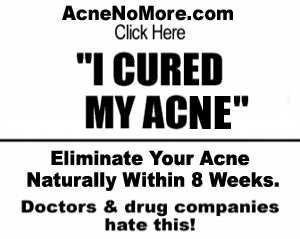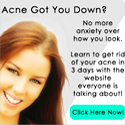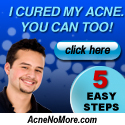Acne Some Alternative Therapies
Acne – Some Alternative Therapies
Zits, pimples, blemishes, breakouts-whatever you call it, acne can be a challenging condition that can be difficult to treat. Acne is very common, with an estimated 80% of all people worldwide expected to suffer from some sort of acne in their lifetime. For those who suffer from the occasional zit, acne is a transient annoyance that is not of much concern most of the time. For others, acne is a daily obsession that can make a serious impact on a person’s self-esteem and overall psychological health.
Most people who suffer from acne resort to harsh chemicals and conventional antibiotic therapies to heal their blemishes. Fortunately, more options are available now than ever before. If you are considering seeking out alternative therapies, here is a quick run-down of the latest methods for treating acne.
Blue light therapy: Blue light therapy is aimed at acne patients who have had little success with other treatments. Blue light therapy focuses on eradicating the bacteria that causes most forms of acne, propionibacterium acnes (P. acnes). P. Acnes creates the small molecules known as porphyrins that in turn help produce the bacterium that causes most types of acne inflammation. Blue light therapy works by zeroing in on the porphyrins. Porphyrins that are exposed to the blue light are able to produce free radicals that destroy the P. acnes bacteria.
Blue light therapy is rapidly becoming a popular treatment for acne because it is non-invasive and drug-free way to help heal blemishes. Many topical medications contain strong ingredients that damage sensitive skin, resulting in peeling, redness, and increased sun sensitivity. Blue light therapy is widely regarded as an easy and drug-free alternative to most acne medications. Some individuals have expressed concern over the safety of blue light therapy. In the past, light therapy options have not been considered 100% safe. Past light therapy treatments consisted of ultraviolet light that was harmful to the skin. Fortunately, modern blue light therapy has been FDA approved and is free of UV light.
So how does blue light therapy work? Generally, blue light therapy is administered in gradual increments. A common schedule of treatment might consist of eight sessions given over a period of four weeks. Blue light therapy sessions are short, usually lasting about 15 minutes. Visit a skin specialist or dermatologist to receive more information, or to receive a treatment of blue light therapy.
Another form of light therapy that is used to treat acne is known as pulsed light and heat energy (LHE) therapy. LHE therapy uses both light and heat to eradicate the root causes of acne. Like blue light therapy, LHE therapy uses light to destroy acne-causing bacteria. LHE therapy also uses heat to reduce the production of sebum and to help shrink sebaceous glands. LHE therapy is an attractive option for many acne sufferers because it promises fast results. Usually, improvement in the symptoms of acne can be seen in as early as 30 days. LHE therapy is also becoming popular because it is a fast treatment, with most sessions done in just over 10 minutes. The FDA has approved LHE therapy for the treatment of mild to moderate acne.
While different kinds of light therapies may seem attractive, they can also be expensive, and may not be covered by most health insurances. If you are looking for a therapy that is milder and less expensive, consider many the many herbal therapies that available. Many herbs have been signaled as potentially therapeutic. Some acne sufferers swear by certain herbal supplements, including black currant seed oil and evening primrose oil. Both herbs are recommended to acne sufferers. Try taking three 500-milligram capsules each day to control your acne. It may be helpful to create an herbal diary of sorts, where you can track the herbs you are taking and their efficacy.
Beside herbs, certain vitamins and minerals are also highly recommended for acne sufferers. Vitamin A is perhaps the most important vitamin for the production and maintenance of a healthy complexion. Vitamin A helps control the amount of sebum produced by your skin, and it is also a key vitamin in the production of keratin. Vitamin A is very potent, and must only be taking in controlled doses. Consult your doctor about the appropriate amount of Vitamin A for your situation. Other important ‘skin’ vitamins are Vitamin B-6 and Vitamin E. An important mineral for the maintenance of a healthy complexion is Zinc. Approximately 30-50 mg of Zinc daily is recommended for acne sufferers.





